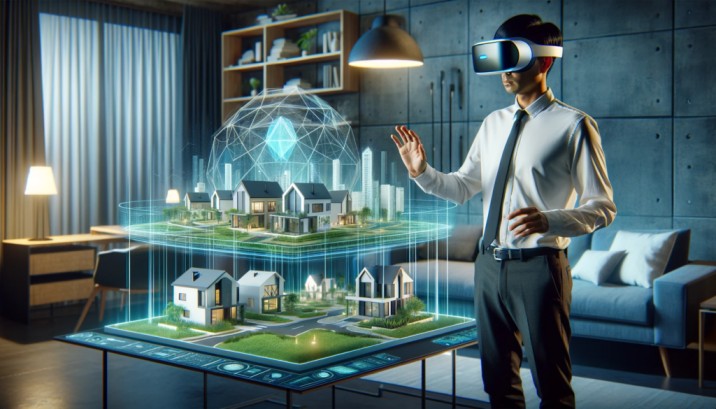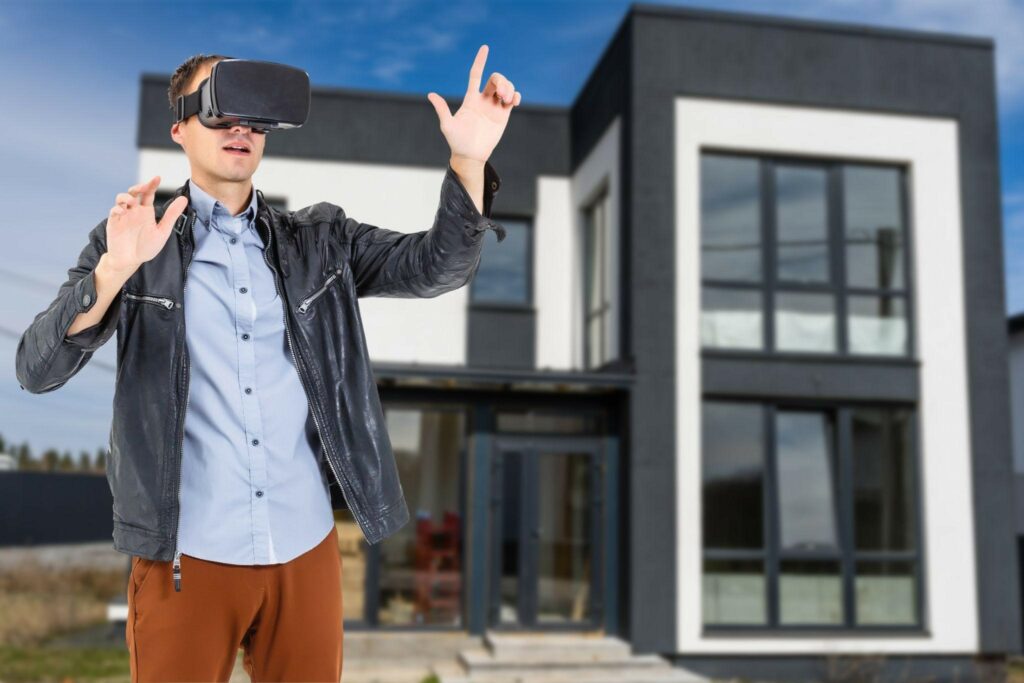Augmented Reality in Real Estate Marketing: Enhancing Buyer Experiences
The real estate field has always been among the first industries to adopt technologies aiming at improving customer experience. One of these technologies is Augmented Reality (AR) which is changing the way in which properties are marketed and sold. Combining the physical and digital worlds together, AR helps potential buyers visualize properties in ways never possible before. From virtually staging a room to presenting the changes made, AR is changing the way buyers experience and interpret places.
How AR works in marketing real estate
So, augmented reality helps real estate agents to sell their properties in a very interesting way. Also known as augmented reality, it lays digital data over a real-world physical space and helps visualize the spatial configurations of layouts in 3D. For example, they can use AR applications on your smartphone or tablet which will show how a living room would look with different types of furniture arrangements or paint colors. Along the same line, AR also helps agricultural properties by showing how much of a tractor will fit in that barn or landscape before the buyer even steps foot on the property, giving them another practical insight.
AR Greatly Improves Buyer Engagement
Among the unique ones of this trend is the increased exposure of buyers through AR an appealing benefit in real estate. In the past, buyers have had to use static images or videos of properties to picture them in their minds a process that easily led to uncertainty. AR fills this gap by providing dynamic, customizable, and real-time relations.
Virtual Staging with AR
The virtual staging is an absolute game-changer for marketing real estate. A few taps on a mobile device can fill vacant rooms, helping buyers visualize how to turn empty bedrooms into livable homes. Augmented Reality allows users to personalize their furniture, decor, and layouts for an experience completely tailored to suit them. This customization creates an engaging way for buyers to decide quickly and with confidence.
Interactive Property Tours
Open houses become more fun with Augmented reality. AR apps allow buyers to ‘walk through’ properties, ensuring important features like energy-efficient systems and hidden storage spaces appear whilst also technology showing potential renovations in the future. AR can demonstrate how retail spaces, offices, or industrial facilities might work in commercial properties.
Visualization of Renovations
High renovation projects worry buyers when they are unable to see the end result. Augmented Reality fills this gap by making people able to visualize proposed modifications on their devices. As an example, a poorly managed kitchen could be converted into an architectural masterpiece in augmented reality and enable buyers to envision the potential of the property.
Advantages of Augmented Reality For Real Estate Marketers
AR complements how real estate properties are presented and augments the relationships with customers.
Cost-Effective Marketing
Through AR there is no longer a need for physical staging or traditional marketing material reliance. Rather than painstaking expensive brochures or show homes, sustained immersive AR experiences can be even, nay more effective for agents.
Global Reach
AR provides accessibility in a way that auto transports international buyers to the location of their intended properties without ever stepping foot on an airplane. This globalized world makes it so that buyers can take virtual tours of properties halfway across the world from them, resulting in a hassle-free buying process.
Improved Lead Conversion
More engaging experiences lead to more interest and quicker conversion time. Virtual interactivity: When buyers are immersed in a property and can engage virtually with its features, they become more compelled to take the next step.
Barriers To Applying AR For Real Estate
AR certainly has its advantages but it also faces hurdles in terms of adoption. For smaller agencies, the steep development costs and the need for cutting-edge equipment can be hurdles. Moreover, creating AR content needs technical skills and collaboration with developers causing project timelines to be extended.
And then there is, of course, the issue of user adoption. It might take time and education of buyers, who have never seen AR on how to use it while supporting the users with the product a high cost for real-estate companies. Nevertheless, such disadvantages are likely to all but disappear as AR technology becomes increasingly widely available and affordable.
AR in Real Estate Marketing: Their Future
AR has enormous potential where real estate marketing is concerned. And as the tech evolves, AR tools are likely to be further intertwined with buying experiences. Shoehorning in AR glasses and headsets, innovations that become better to market can easily make even virtual house tours much more practical by giving purchasers a realistic impression of measure and depth.
With a rise in climate-appropriate reuse, AR could also help visualize sustainable changes. From solar panels to rainwater harvesting systems buyers can use AR to visualize how sustainability initiatives will fit into their future homes.
Real Estate Meets Agriculture
AR is also making advancements in the intersection of real estate and agriculture. If you are a potential buyer of farmland or an agricultural estate, then AR can be a tool valuable beyond measure. Buyers can understand how farm layouts could be shaped for particular types of equipment, such as tractors or irrigation systems. They can also see where they might be able to expand in the future or how the land will work with crop rotation or livestock management.
AR brings imagination into reality, making it easier for agricultural property buyers to assess the potential of land and their practicality, enabling them to make the right move.
Conclusion
Augmented reality is definitely a game-changer in the field of real estate marketing. This not only adds a layer of engagement for buyers but also makes the decision-making process simpler, as AR integrates property viewing with technology in an interactive and immersive manner. From virtual staging to interactive and 360-degree tours or even targeting renovation potential, ALL of them put the power in the hands of both buyers and sellers.
The technology is still a way from maturing, and it will see more and more applications in the market helping with innovation in marketing and sales. From these use cases, we see that adopting AR, particularly in the context of real estate is not just a choice but rather an imperative for industry players to retain their competitive edge as technology grows ever more pervasive in our lives. From residential houses to farms, AR is raising the bar for real estate property presentation, exploration, and sale.


3 thoughts on “Augmented Reality in Real Estate Marketing: Enhancing Buyer Experiences”